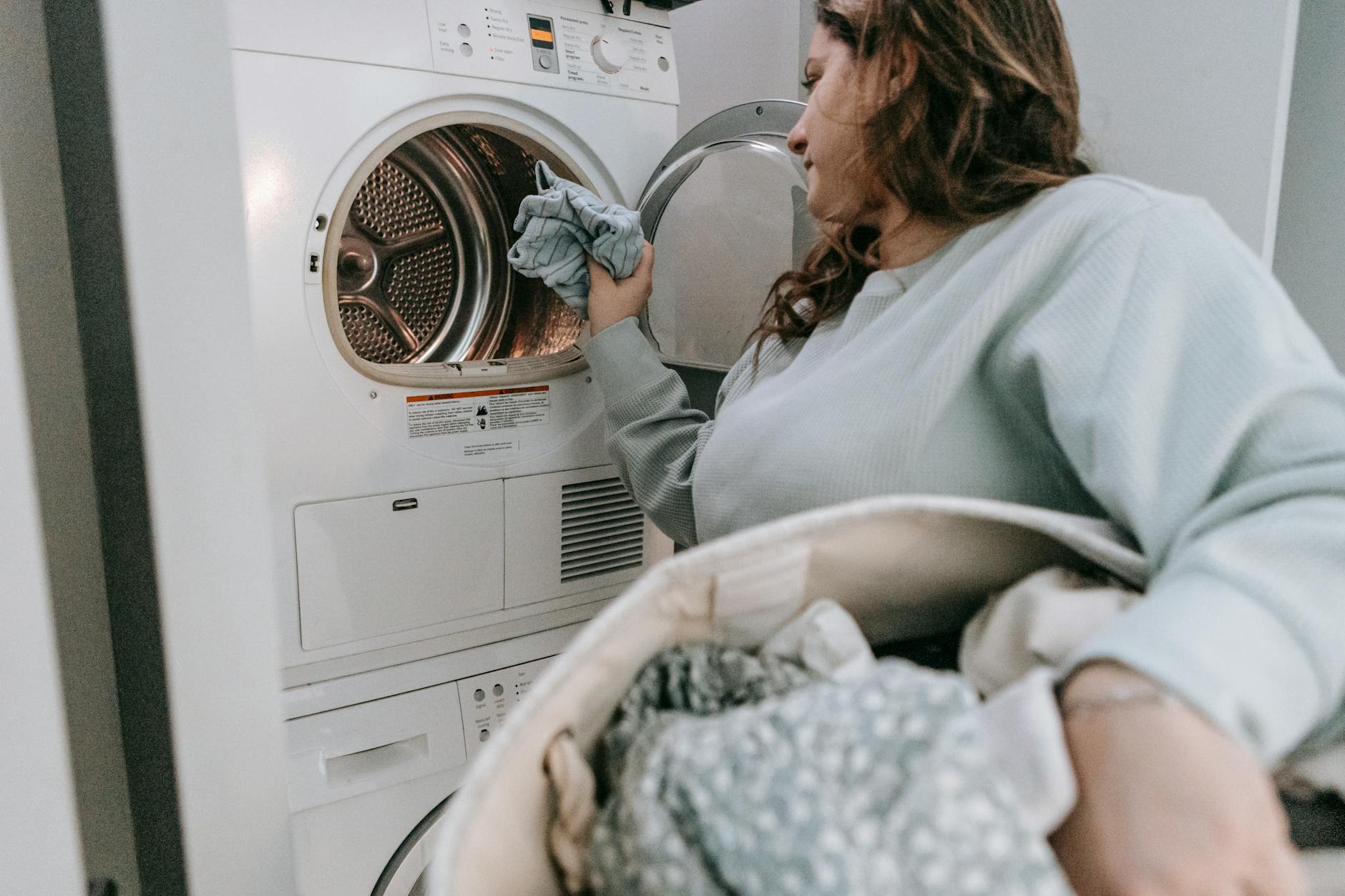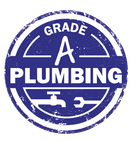Clogged drains can sneak up on you and cause serious trouble—from slow water flow to expensive repairs. Whether it’s the kitchen sink, bathroom drain, or laundry room, each area of your home has unique challenges. Keeping your drains clear is easier than dealing with costly fixes later. With a few simple habits and practical solutions, you can keep water flowing freely and avoid the headaches of clogged pipes.
Kitchen Drain Maintenance
The kitchen drain faces daily challenges, from grease and oil to food scraps. Ensuring its smooth operation isn’t just about convenience—it helps prevent costly repairs and extends the life of your plumbing. Below are some effective ways to maintain your kitchen drain and avoid blockages.
Dispose of Grease Properly
Grease might go down the drain as a liquid, but it solidifies as it cools, sticking to your pipes like glue. Over time, this can lead to stubborn clogs that are hard to remove.
Instead of pouring grease straight into the sink, try these alternatives:
- Use a grease container: After cooking, pour the grease into a designated container. Once it cools and solidifies, toss it in the trash.
- Wipe pans with paper towels: Before washing oily pans, wipe them out to soak up excess fat.
- Compost when appropriate: If you’re into composting, small amounts of grease (especially plant-based oils) can be added to your compost bin.
Use a Drain Strainer
Small bits of food can easily end up in the drain, especially when rinsing dishes. Over time, these scraps can build up and create blockages. A drain strainer is a simple and affordable solution.
- How it works: It catches solid debris before it enters the drain, making clean-up easier.
- Maintenance tip: Empty and rinse the strainer daily to keep it effective. For deeper cleaning, wash it with soap and water weekly to remove grease films or food residue.
This small tool can save you big headaches down the road.
Regular Cleaning with Hot Water
Even with proper grease disposal, small amounts of oil and fat can still make their way into the pipes. Hot water helps dissolve and flush this buildup before it turns into a clog.
Here’s how to do it:
- Boil a large pot of water (or use a kettle for convenience).
- Slowly pour the boiling water down the drain—this ensures all the grease is melted and washed away.
- Repeat weekly or after fatty meals to keep your pipes clear.
This is one of the easiest and most effective preventative measures you can take.
 Photo by zaid mohammed
Photo by zaid mohammed
These simple habits can make a big difference in how your kitchen sink functions. With a little effort, you’ll avoid clogs and have water flowing freely every time you need it.
Bathroom Drain Care
Bathroom drains can be particularly vulnerable to clogs due to daily usage and the types of debris that accumulate over time. Hair, soap scum, and even products like wipes or floss can wreak havoc on your plumbing. With simple preventive measures, though, these issues are easy to avoid.
Install Hair Catchers
Hair is one of the leading culprits for clogged bathroom drains, whether in the shower, tub, or sink. A hair catcher is a simple, inexpensive tool that can make a big difference.
- Why it works: Hair catchers trap strands before they flow into the pipes, significantly reducing the chance of build-up.
- Easy installation: Most models sit over or fit snugly inside the drain opening, making them easy to remove and clean.
- Maintenance tip: Empty the hair catcher after each use and give it a quick rinse to prevent odors or mold buildup.
This small investment saves time and money by reducing the frequency of clogs.
 Photo by Kaboompics.com
Photo by Kaboompics.com
Mindful Flushing Practices
The bathroom isn’t just about water draining—it’s also about what you flush down the toilet. Flushing non-biodegradable items can quickly lead to blockages that require professional intervention.
- Stick to the basics: Only flush toilet paper and human waste. Even “flushable” wipes can lead to clogs.
- Items to avoid flushing:
- Cotton balls
- Feminine hygiene products
- Dental floss
- Paper towels
- Why it matters: These items don’t break down easily and often combine with grease or soap residue, creating stubborn blockages.
Think of your toilet as a delicate system—not a trash can.
Routine Drain Cleaning
Regular upkeep keeps bathroom drains running smoothly, preventing small issues from becoming major headaches. It’s not just about stopping clogs; it’s also about ensuring cleanliness and hygiene.
- Weekly habits: Remove drain stoppers and clean off any collected hair or soap scum. A toothbrush works great for scrubbing grime away.
- Monthly deep clean: Use a natural solution like a mix of baking soda and vinegar. Follow these steps:
- Pour 1/2 cup of baking soda into the drain.
- Add 1 cup of vinegar and let it fizz for about 10 minutes.
- Flush with boiling water to clear out debris.
- Avoid chemicals: Harsh drain cleaners can damage pipes, especially older plumbing systems.
Routine attention ensures water flows freely, reducing the risk of backups that can lead to costly repairs.
Laundry Room Drain Tips
The laundry room may not be the first place you think of when considering clogged drains, but it carries its own set of risks. Washing machines work hard to keep clothes clean, and they can unleash lint, soap residue, and other debris into your plumbing system. With just a few preventive steps, you can avoid costly backups and keep your appliance running smoothly.
Check and Clean Lint Traps
Without proper care, lint can work its way into the washer’s drainage system, creating blockages over time. Think of lint as the forgotten culprit behind clogged laundry pipes. Regularly cleaning lint traps in your washer is key to stopping these sneaky fibers from collecting.
- Where to look: Locate the lint filter in your washing machine. Some are built into the agitator, while others sit at the top of the drum or near the drain.
- How often to clean: After every load, remove lint from the filter. For machines without a visible trap, consult your manual—hidden lint filters may require occasional maintenance.
- Pro tip: If your washer lacks a lint trap, use a mesh lint catcher on the drain hose. It’s inexpensive and easy to replace.
Neglecting lint removal is like adding a slow-clogging plug to your pipes. Stay consistent, and you’ll dodge the need for costly fixes.
Avoid Overloading the Washing Machine
We’ve all been tempted to toss just one more item into the washer to avoid a second load. But overloading isn’t just tough on your clothes—it can strain your washer’s drainage system. A packed drum means extra water and debris that has nowhere to go.
- Why it matters: Overloading causes improper rinsing and forces lint, dirt, and soap scum into the drain. These materials build up and lead to clogs.
- The solution: Follow the manufacturer’s guidelines for load sizes. When in doubt, err on the side of smaller loads.
- Added bonus: Lighter loads don’t just help the drains—they also clean better and reduce wear and tear on your appliance.
Think of it this way: a washing machine is like a dance partner. If they’re carrying too much, they miss steps, stumble, and put extra stress on everything else.
 Photo by Sarah Chai
Photo by Sarah Chai
Making small adjustments to your laundry habits can save big headaches down the road. It’s a simple way to keep things running smoothly without breaking a sweat.
Outdoor Drainage Solutions
Outdoor drains are just as important as indoor ones when it comes to preventing clogs. Blocked gutters or yard drains can lead to water pooling near your home, causing potential damage to the foundation, soil erosion, or even basement flooding. Let’s explore two essential ways to keep outdoor drainage systems clear and effective.
Clean Gutters Regularly
Your gutters are like the first line of defense against water buildup around your property. When they’re clogged with leaves, dirt, or debris, water overflows and collects near the foundation, causing significant problems.
- Why it matters: Overflowing gutters can lead to cracked foundations, mold growth, and even pest infestations.
- How often: Aim to clean your gutters at least twice a year—once in spring and again in fall. If you have trees nearby, you might need to do it more frequently.
- Tools you’ll need: A sturdy ladder, gloves, a gutter scoop, and a hose make the task manageable.
- Pro tip: After cleaning, run water through the gutters to check for leaks or clogs in downspouts.
When you neglect your gutters, you’re inviting costly repairs. Stay on top of it, and you’ll keep your home’s drainage system in top shape.
 Photo by Tima Miroshnichenko
Photo by Tima Miroshnichenko
Use Exterior Drain Covers
A simple yet effective solution to blockages is installing drain covers. These prevent leaves, twigs, and other debris from entering outdoor drains, which can quickly cause clogs.
- How they work: Made from metal or plastic, these covers sit over the top of drains, acting as a barrier while still letting water flow through.
- Best locations: Install them on driveway drains, patio drains, and even around yard drainage grates.
- Maintenance tips: Check the covers after heavy storms to clear off any accumulated debris. This keeps water flowing freely.
Think of drain covers as a security guard for your outdoor drainage system. They stop debris at the surface, so your drainpipes don’t have to deal with it later.
By pairing regular gutter cleaning with effective drain covers, you can safeguard your property from water damage and keep your exterior drainage system running smoothly.
Conclusion
Keeping your drains clear doesn’t require a plumber on speed dial; just stick to simple habits. Toss grease, hair, and lint in the trash, not the drain. Use tools like strainers, hair catchers, and lint traps to block debris. Regular cleaning with hot water or natural solutions can stop buildup before it starts.
Small steps now save money and stress later. Ready to make these changes? Share this post or tell us your favorite tips!
